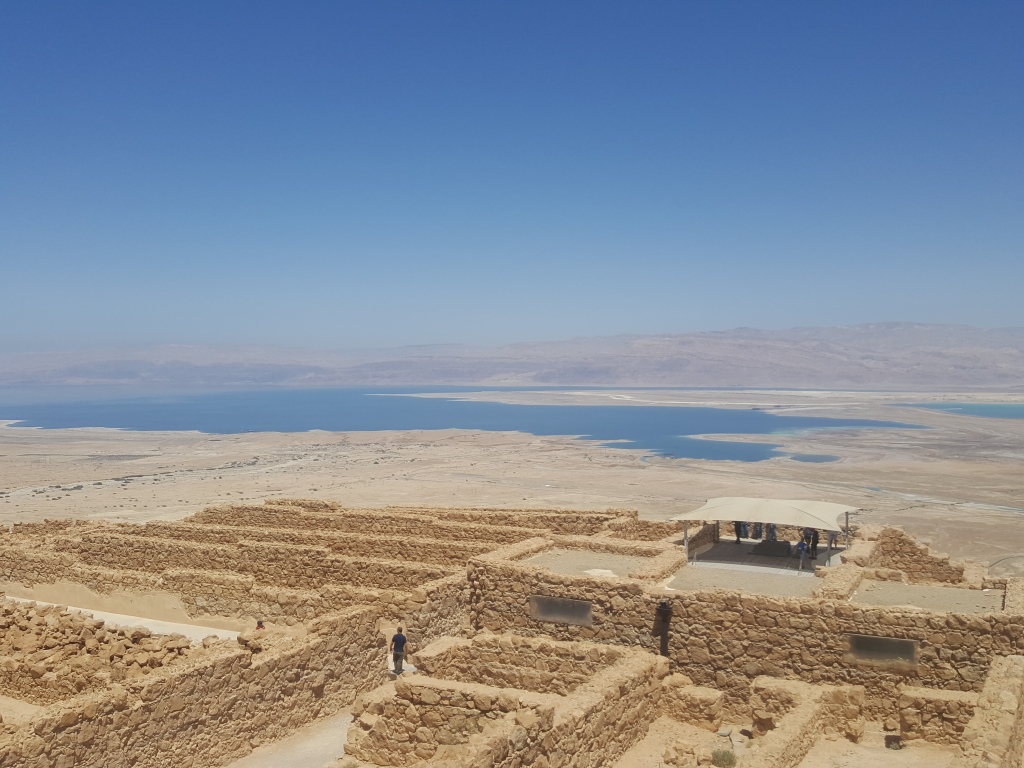It’s hard to live in Jerusalem and not feel like you’re tripping over Herod’s legacy all the time. Over two thousand years after his death, that alone is testimony to the magnitude of the man. So, who was he and what mark did he leave on the Holy Land?
Herod was perhaps the original villain. Children around the world are still introduced to King Herod through the Christian nativity story where we are told that at the time of Jesus’ birth, Herod was rounding up and killing all baby boys, less anyone should challenge his power. There is debate over if this really happened in this way, but most historians believe that Herod was crazy enough for there to be at least some truth in the tale.

It is thought that Herod was born around 73 BC and that he reigned for 33 years before his death in 4 BC. During that time his building projects transformed the Holy Land and in the words of our knowledgeable friend and scholar, he was ‘a genius engineer, a talented diplomat and a paranoid maniac’.
It is staggering to imagine how Herod managed to coordinate the building of the Second Temple in Jerusalem, the construction of the port at Caesaria, the fortress at Masada and his own palace Herodium, all within several decades.
It also gives an insight into his character and diplomatic skills to consider why he built these. The Second Temple was to win favour with the Jewish people (he wasn’t Jewish himself) and to build a Kingdom they could be proud of. Caesaria was named after the Roman Emperor Caesar Augustus whom Herod had to keep onside if his reign was to go unchallenged. Masada was needed for defence and Herodium was his home and vanity project. In creating these, he gave work to hundreds of thousands of men and created order through tyranny.
We recently visited the fortress of Masada with an excellent tour guide (the scholar!) to hear more about the greatness and evil of Herod. Masada sits on a rocky plateau, 450 metres above the level of the Dead Sea which it overlooks. The desert landscape is harsh and unforgiving. The site is managed by the Israel Nature and Parks Authority and you can reach the fortress by cable car, or you can opt to hike up the snaking path to the top. Doing so, gives a real appreciation of the scale of the challenge Herod was facing: steep slopes, baking heat and no natural water are not normally the ingredients of success for a colossal building project.

This is where Herod’s genius shines through and his building design and aqueduct systems were revolutionary both in Masada and his other projects. Our guide Oliver told us that Masada had been designed to catch all rainfall and channel it into underground cisterns. It didn’t rain often in the desert but when it did, one day of rain could yield enough water to sustain 1000 people for two years.
To balance out the genius, we also heard about Herod’s ruthful side, which wasn’t spared on his own flesh and blood. It is thought that Herod married no fewer than ten times, creating multiple family trees and offspring. He divorced his first wife Doris, executed his second wife Mariamne and went on to have at least three of his sons executed over the years. When his own death came in 4BC it was described as being extremely painful and gruesome, and without a medical diagnosis at the time, took instead the name of ‘Herod’s Evil’.
A fresh wisp of a breeze passed over the Masada complex as the January sun shone down on us. Everything was still, except for a few birds flitting around. The complex is extensive and has been sympathetically restored to clearly indicate the original stonework. There is much to explore, but if your imagination struggles to re-enact the scenes from 2000 years ago, the views alone, which stretch across to Jordan are enough to make it a breath-taking site.

Seventy years after Herod’s death, Masada was the last place to fall to the Romans in 66CE after Jerusalem. The Roman army surrounded the site, building a wall around it to stop anyone or anything from leaving or entering. The thousand rebels who had been defending the site were completely surrounded and knew they were no match against the strength of the Romans. Instead of meeting the fate that awaited them, the legend tells that they committed suicide together, with husbands responsible for killing their own wives and children before killing themselves.
It is a dramatic and shocking tale and although history offers up different explanations and variations as to the exact ending, there can be no doubt that the site still holds immense historical importance.
I left wanting to read Herod’s diaries and medical reports, wishing we had an account from Doris and the other wives. I’m fascinated and repulsed in equal measure. What would Herod, King of the Jews, think of Israel today? How much does his shadow really still hang over Jerusalem?
If you want to find out more, I highly recommend a visit to Masada, Herodium and Caesaria. They weave a bread crumb trail through the life of Herod.
With thanks to our great guide Oliver for bringing the history to life for me in a way that added colour and intrigue to ancient stones.
Great as always Kirsty!
If you want another perspective on Herod, check out the Naked Archeologist episode about Herod, including his medical records (or may one could say his karmatic records)
LikeLiked by 1 person
Thanks Ingela, this was very interesting!
LikeLike